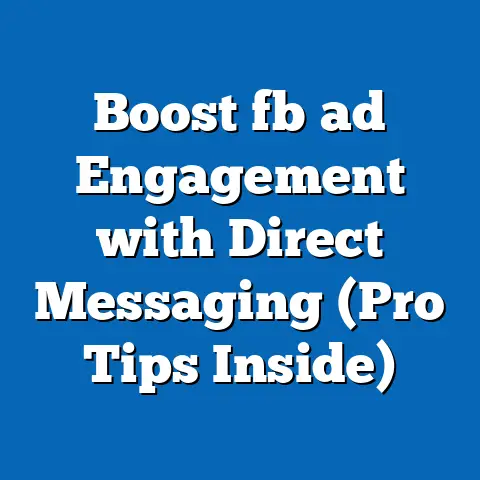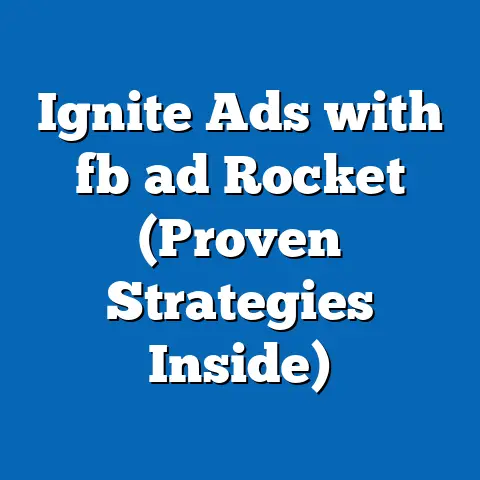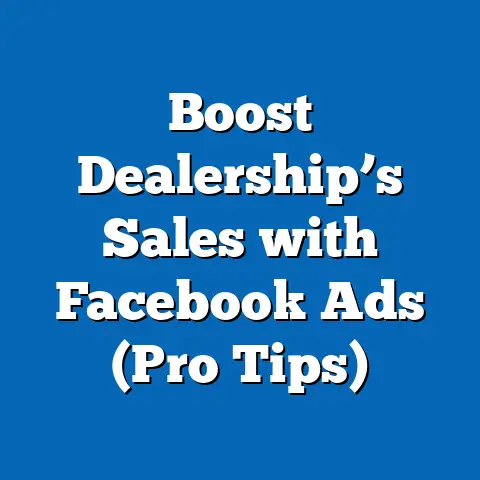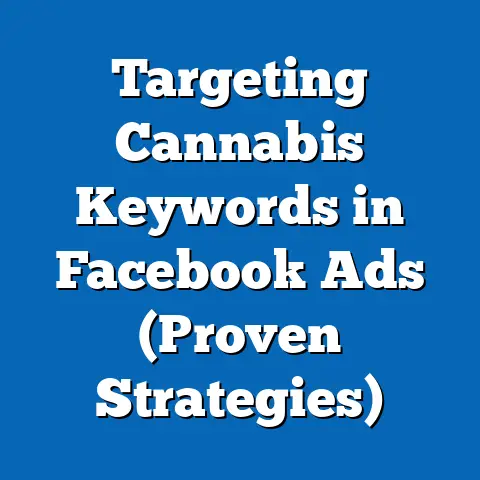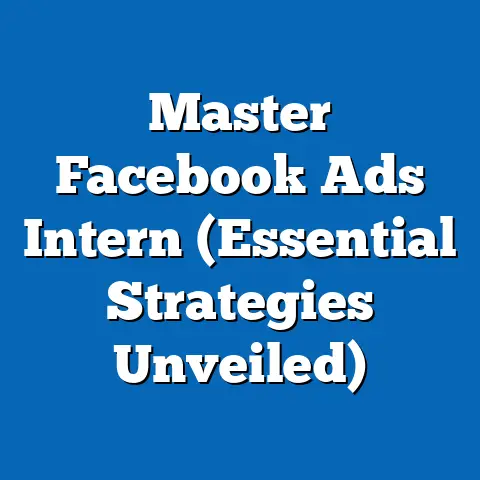Revive fb ad Set’s Results (Proven Strategies)
As of 2023, a staggering 80% of marketers report that Facebook ads remain their primary source for customer acquisition. This highlights the platform’s enduring influence in digital marketing. But, let’s be real, running successful Facebook ads isn’t a “set it and forget it” situation. Even the best-performing ad sets can hit a wall – that dreaded ad fatigue. That’s why it’s crucial to understand how to strategically revitalize your campaigns. I’ve been there, staring at plummeting CTRs and rising costs, wondering what went wrong. Trust me, it happens to the best of us. This guide is packed with proven strategies to help you breathe new life into your Facebook ad sets and get back on track to achieving your desired results.
Understanding Ad Set Fatigue
Ad set fatigue, in simple terms, is when your audience gets tired of seeing the same ads over and over again. Think of it like hearing the same song on repeat – eventually, you just tune it out. This fatigue leads to a decline in engagement, a drop in click-through rates (CTR), and ultimately, a decrease in your overall return on ad spend (ROAS).
I remember one campaign I ran for a local bakery. Initially, the ads were a hit, driving tons of traffic to their website and resulting in a surge of online orders. But after a few weeks, the performance started to dip. The same images and copy that had once been so effective were now just fading into the background. This is ad set fatigue in action.
Common signs of ad set fatigue include:
- Declining CTR: People are less likely to click on your ads.
- Lower Engagement: Fewer likes, comments, and shares on your ads.
- Reduced Conversion Rates: Even if people are clicking, they’re not converting into customers.
- Increased Cost Per Click (CPC): You’re paying more for each click you get.
- Decreased ROAS: You’re getting less return on your investment.
It’s crucial to recognize these signs early on. Ignoring them can lead to wasted ad spend and missed opportunities. Data consistently shows that campaigns left unchecked experience a significant drop in performance over time. A study by HubSpot found that ad fatigue can decrease engagement by up to 50% in just a few weeks! This underscores the need for a proactive approach to ad set management.
Takeaway: Ad set fatigue is a real phenomenon that can significantly impact your campaign performance. Knowing the signs and understanding the causes is the first step to combating it.
Analyzing Current Performance Metrics
Before you can revive your ad sets, you need to understand what’s going wrong. That means diving into your data and analyzing your key performance indicators (KPIs). Fortunately, Facebook Ads Manager provides a wealth of information to help you do just that.
Here are some crucial KPIs to track:
- Click-Through Rate (CTR): This measures the percentage of people who see your ad and click on it. A low CTR indicates that your ad isn’t resonating with your audience.
- Cost Per Click (CPC): This is the amount you pay each time someone clicks on your ad. A rising CPC can signal increasing competition or ad fatigue.
- Cost Per Acquisition (CPA): This measures the cost of acquiring a new customer through your ads. A high CPA can indicate problems with your targeting or landing page.
- Return on Ad Spend (ROAS): This measures the revenue you generate for every dollar you spend on ads. A low ROAS means your ads aren’t profitable.
- Frequency: This indicates how many times, on average, a person sees your ad. A high frequency can lead to ad fatigue.
How to Use Facebook Ads Manager for Tracking Metrics:
- Go to Facebook Ads Manager: Navigate to your Ads Manager account.
- Select the Ad Set: Choose the ad set you want to analyze.
- Customize Columns: Click on “Columns” and select “Customize Columns” to choose the metrics you want to see. I always make sure to include the KPIs mentioned above.
- Analyze the Data: Review the data for each metric over a specific period (e.g., the last 7 days, 30 days). Look for trends and patterns.
I remember one instance where I was running ads for an e-commerce client selling handmade jewelry. The initial ROAS was fantastic, but after a month, it started to decline. By analyzing the data in Ads Manager, I noticed that the CTR was steadily decreasing while the frequency was increasing. This clearly indicated ad fatigue.
Step-by-Step Guide to Identifying Underperforming Ad Sets:
- Set a Benchmark: Determine what you consider to be acceptable performance for each KPI. For example, a good CTR might be 1-2%, while a good ROAS might be 3x.
- Compare to Benchmark: Compare your actual performance to your benchmark. Identify any ad sets that are falling short.
- Investigate Further: For underperforming ad sets, dig deeper into the data to understand why they’re not performing well. Look at demographics, placements, and creative performance.
Takeaway: Data analysis is essential for identifying and addressing ad set fatigue. By tracking your KPIs and understanding the trends, you can pinpoint the areas that need improvement and make data-driven decisions to revive your campaigns.
Proven Strategies to Revive Ad Sets
Now for the good stuff! Once you’ve identified the problem, it’s time to take action. Here are some proven strategies to breathe new life into your Facebook ad sets:
1. Creative Refresh
One of the most effective ways to combat ad fatigue is to refresh your ad creatives. This means replacing your old images and videos with new ones.
I’ve found that even a simple change, like swapping out a product photo or updating the headline, can make a big difference.
Different Creative Formats:
- Videos: Videos are highly engaging and can be used to tell a story, showcase a product, or provide a tutorial.
- Carousels: Carousels allow you to display multiple images or videos in a single ad, making them ideal for showcasing a range of products or features.
- Static Images: Simple, high-quality images can be very effective, especially when paired with compelling copy.
A/B Testing:
Don’t just guess which creatives will work best. Use A/B testing to compare different versions of your ads and see which ones perform best. Facebook Ads Manager makes it easy to set up A/B tests and track the results. I typically test one variable at a time, such as the headline, image, or call to action.
Example:
I was working with a clothing brand that was experiencing ad fatigue. We decided to create a series of new video ads featuring different influencers wearing their clothes. We also created new static image ads with updated product photos and headlines. After A/B testing, we found that the video ads performed significantly better than the static image ads, resulting in a 30% increase in CTR.
Takeaway: Refreshing your ad creatives is crucial for combating ad fatigue. Experiment with different formats and use A/B testing to find what resonates with your audience.
2. Audience Re-targeting
Re-targeting is the process of showing ads to people who have already interacted with your business. This can be a highly effective way to revive your ad sets, as these people are already familiar with your brand.
Creating Custom Audiences:
Facebook allows you to create custom audiences based on a variety of criteria, including:
- Website Visitors: People who have visited your website.
- Email List: Customers on your email list.
- Facebook Page Engagement: People who have liked your page or interacted with your posts.
- Video Views: People who have watched your videos.
Creating Lookalike Audiences:
Lookalike audiences are a powerful way to reach new potential customers who are similar to your existing customers. Facebook uses its data to identify people who share similar demographics, interests, and behaviors with your custom audiences.
Segmenting Your Audience:
Don’t treat all your re-targeted users the same. Segment your audience based on their behavior and interests to deliver more personalized ad experiences. For example, you could show different ads to people who viewed a specific product page versus those who simply visited your homepage.
Example:
For the bakery I mentioned earlier, we created a custom audience of website visitors who had viewed their online menu but hadn’t placed an order. We then created a re-targeting ad offering a special discount for first-time online orders. This resulted in a significant increase in online sales.
Takeaway: Re-targeting is a powerful strategy for reviving ad sets. By targeting people who are already familiar with your brand, you can increase engagement and drive conversions.
3. Adjusting Budget and Bidding Strategies
Sometimes, all it takes to revive an ad set is a simple adjustment to your budget or bidding strategy.
Adjusting Daily Budgets:
Increasing your daily budget can help you reach a larger audience and potentially overcome ad fatigue. However, be careful not to increase it too much too quickly, as this can lead to wasted ad spend. I typically recommend increasing your budget by 10-20% at a time and monitoring the results.
Bid Strategies:
Facebook offers a variety of bidding strategies, including:
- Lowest Cost: Facebook will try to get you the lowest possible cost per result.
- Cost Cap: You set a target cost per result, and Facebook will try to achieve it.
- Target ROAS: You set a target ROAS, and Facebook will try to achieve it.
The best bidding strategy for you will depend on your campaign goals and budget. I often start with the “Lowest Cost” strategy and then experiment with other strategies as needed.
Budget Reallocation:
If you have multiple ad sets, consider reallocating your budget to prioritize the high-performing ones. This can help you maximize your overall ROAS.
Example:
I was working with a fitness studio that had two ad sets: one targeting people interested in yoga and one targeting people interested in weightlifting. The yoga ad set was performing significantly better than the weightlifting ad set. We decided to reallocate more of the budget to the yoga ad set, which resulted in a higher overall ROAS for the campaign.
Takeaway: Adjusting your budget and bidding strategies can have a significant impact on your ad performance. Experiment with different approaches to find what works best for your campaign goals.
4. Leveraging Seasonal Trends and Events
Capitalizing on seasonal trends and events can be a great way to re-engage your audience and boost ad performance.
Aligning Campaigns with Seasonal Trends:
Think about how you can tie your ads to upcoming holidays, seasons, or events. For example, if you’re selling winter clothing, you could run ads featuring your warmest coats and sweaters during the colder months.
Relevant Events:
Consider local events, festivals, or conferences that might be relevant to your target audience. You could run ads promoting special offers or discounts for attendees.
Example:
During the holiday season, the bakery I mentioned earlier ran ads featuring their festive treats and holiday gift baskets. They also offered a special discount for customers who placed their orders before a certain date. This resulted in a significant increase in holiday sales.
Takeaway: Aligning your ad campaigns with seasonal trends and events can be a highly effective way to re-engage your audience and boost ad performance.
5. Experimenting with Ad Placement
Facebook offers a variety of ad placements, including:
- Facebook Feed: The main news feed on Facebook.
- Instagram Feed: The main feed on Instagram.
- Facebook Stories: Short-form video or image content that disappears after 24 hours.
- Instagram Stories: Similar to Facebook Stories.
- Facebook Marketplace: A platform for buying and selling goods and services.
- Audience Network: A network of websites and apps that display Facebook ads.
Testing Different Placements:
It’s important to test different placements to see where your ads perform best. Some audiences may be more receptive to ads in the Facebook Feed, while others may prefer Instagram Stories.
Optimize Based on Data:
Use your data to optimize your placements. If you find that your ads are performing poorly in a particular placement, consider removing it from your campaign.
Example:
I was working with a travel agency that was running ads promoting their vacation packages. Initially, they were only running ads in the Facebook Feed. After experimenting with other placements, we found that their ads performed significantly better in Instagram Stories, resulting in a lower cost per lead.
Takeaway: Experimenting with different ad placements can help you reach a wider audience and improve your ad performance. Use your data to optimize your placements and focus on the ones that are delivering the best results.
Continuous Optimization and Testing
Reviving your ad sets isn’t a one-time fix. It’s an ongoing process that requires continuous optimization and testing.
Set Up a Testing Schedule:
Create a schedule for testing different aspects of your ads, such as creatives, targeting, and bidding strategies. This will help you identify what’s working and what’s not, and make data-driven adjustments to your campaigns.
Analyze Results:
Regularly analyze your results and look for trends and patterns. Use this information to make informed decisions about how to optimize your ads.
Data-Driven Adjustments:
Don’t be afraid to make changes to your ads based on the data. If something isn’t working, try something different.
Example:
I always tell my clients to think of their Facebook ads as a science experiment. You need to constantly be testing different hypotheses and analyzing the results. This is the only way to truly optimize your campaigns and achieve your desired results.
Takeaway: Continuous optimization and testing are essential for maintaining optimal ad performance. By setting up a testing schedule, analyzing your results, and making data-driven adjustments, you can ensure that your ads are always performing at their best.
Conclusion
Reviving your Facebook ad sets is an essential part of successful digital advertising. By understanding ad set fatigue, analyzing your performance metrics, and implementing the proven strategies outlined in this guide, you can breathe new life into your campaigns and achieve your desired results. Remember, proactive management, continuous optimization, and a willingness to experiment are key.
I encourage you to implement these strategies consistently and share your experiences with Facebook ads in the comments below. What revival strategies have worked for you? Let’s learn from each other and help each other succeed! Now, go out there and revitalize those ad sets!

